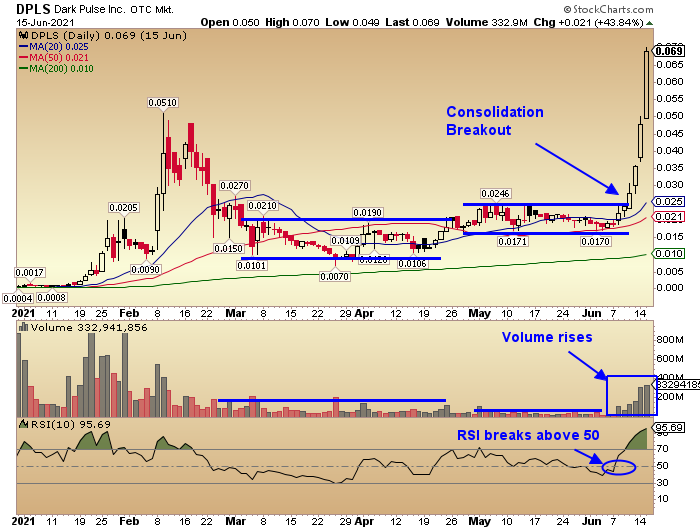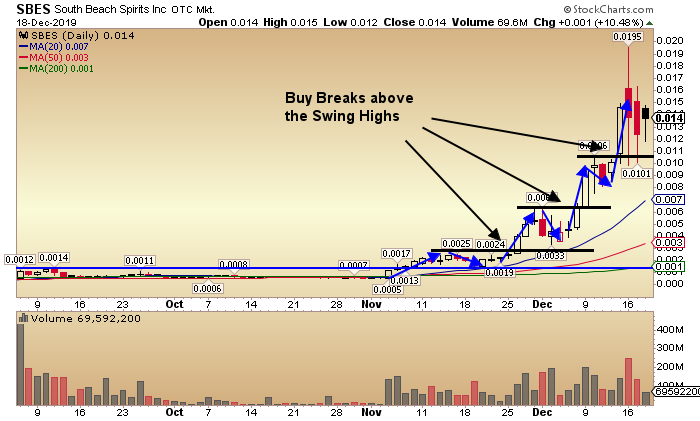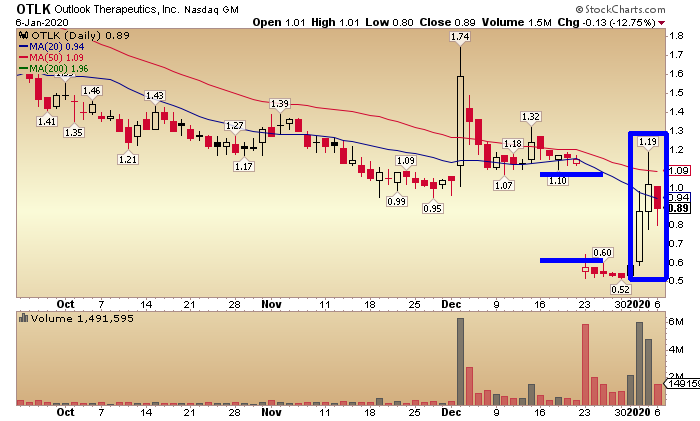A lot of traders get overwhelmed by the headlines.
Watching CNBC at night and waking up to the latest earnings reports and 24-hour news cycle.
There’s a lot to wrap your head around and it can be a bit overwhelming.
I personally don’t worry about what the talking heads on CNBC are jabbering about.
That’s because I trade penny stocks… and for the most part, they’re uncorrelated with the broad market.
When trading penny stocks there is one thing I’m focused on and that’s price action.
If you don’t know where to get started, I’m sharing what I’ve learned over the years.
You’ll learn what penny stocks are, what the PDT rule is, my favorite chart patterns to trade, and the little tricks and insights I’ve learned along the way.
What’s a Penny Stock?
Penny stocks are stocks that trade under $1, as in pennies per share. But anything under $5 is generally considered a penny stock according to the SEC.
And no, not all pennies are in the Over the Counter (OTC) markets… you can find plenty of them on major exchanges like the Nasdaq.
However, with listing requirements, stocks that fall below $1 for a certain amount of time risk being delisted from those major exchanges.
Regardless, penny stocks aren’t as foreign or scary as you might think.
They are regular companies and most of them have enough liquidity to trade them just like you would any other stock.
So if you have ever traded a stock in your life…it’s the same concept with penny stocks.
But aren’t they riskier?
Well, Yes and No…
There is risk in any trading strategy. And when it comes to penny stocks, the companies are usually dogs.
So, if you are trying to invest, find the “next big thing” or find an undervalued stock here…
I’ll be frank, you’re playing with fire.
But when it comes to trading penny stocks…it’s just trading.
I’m not looking for a long-term fundamental investment. I’m looking to get in and out based on certain chart patterns and technical features.
Brokers
These days pretty much any big broker offers access to penny stocks, even the OTC stocks.
I personally use Etrade and Schwab. I have members using TD and Fidelity. The big-name brokerage that seems to have the most limitations when it comes to penny stocks is Robinhood. This is because it doesn’t offer access to many of the small OTC penny stocks.
There are also places catering to day traders like Interactive Brokers and Tradestation.
Any of these will work great, but before opening an account check with the broker about penny stock commissions and fees.
While some may offer free commissions, others still charge for penny stocks. So it pays to find out ahead of time.
Account Size
This can be a big deterrent to trading stocks. Many brokers nowadays have low balance requirements, ranging from 0 – $500 to fund an account.
If you don’t have any money to risk, then you should stick to demo trading with fake money or practice accounts.
PDT Rule
If you have a small account… you’ve probably heard of the dreaded Pattern Day Trader (PDT) rule.
Basically, for your own “protection,” if you have an account with under $25K… then you can’t day trade.
The rules are based on the fact that so many people lose their shirts trading… but the fact is, it doesn’t matter if you have a small account or big account, most people lose their shirts.
Regardless, this creates a barrier for you when trying to actively trade.
You see, if you are labeled a “pattern day trader” by your broker (and don’t have a $25k balance), they may decide to “freeze” your trading account for upwards of 90 days.
How’s that going to affect your trading?
It’s something to keep in mind as you may need to adjust your strategy to work within the rules.
Here’s how I trade within the confines of the PDT rule without it affecting my trading.
Chart Patterns
When it comes to penny stocks, I’m not investing…I’m trading.
This is why I don’t worry about the overall market or current headlines as much. I pay attention of course; I just don’t get overly concerned.
I mainly stick to my favorite chart patterns and technical features like volume and support and resistance levels, and VWAP.
Consolidation Breakout

Stair Step Pattern

Gap Fill

Tools of the Trade
- Volume- Insights to demand and liquidity
- Scans- Narrow in on the best stocks to trade
- Time of day- Get around the PDT rule
- Shorter Time Frames- Don’t invest in pennies, trade them
- No shorts- Getting caught in a penny stock short squeeze could end your career
- Chart Patterns- Consolidation Breakout, Stair Step Higher
- Catalysts- What’s moving the stock? Is it big?
- VWAP- Important intraday level






